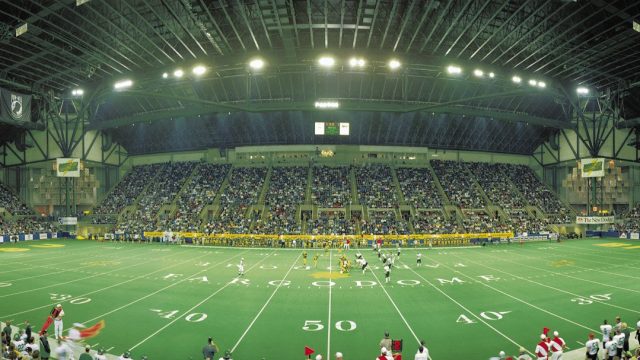Enjoy The Football Season NDSU Fans, It's Costing Taxpayers And Students A Lot

With fall comes the beginning of the collegiate sports season. At least, the season for the most popular collegiate sports in North Dakota. Hockey and football are kicking off at the University of North Dakota and North Dakota State, respectively, and eager fans are filling up social media with excited posting.
As usual, what’s not getting a lot of attention is just how heavy a financial burden sports programs at these schools put on taxpayers and students.
According to the most recent data from the NCAA, the total subsidies the sports programs at each school receive from students and taxpayers has increased yet again. At a time when student loan debt is a burden, and taxpayer appropriations to these universities soar, the amount of taxpayer and student dollars put into these programs is increasing.
The argument from sports fans is that the “big time” sports at these schools – football and hockey – are profitable, and it’s the other sports that suck up all the subsidies. That’s a little hard to believe as the travel, coaching and facility/equipment expenses alone for the top-tier sports are more than their revenues. And even as those programs become more successful, the students and taxpayers still get put on the hook for more.
Is it worth it? With the cost of higher education soaring while the value stagnates, should we really be diverting so many of our higher education dollars into sports that have little more than entertainment value?
Here are the details, courtesy of the NCAA. I should note that “revenues” are all the money the sports programs generate for themselves (ticket sales, merchandise, concessions, etc.). On the other hand, “subsidies” are all the money from student fees or from the universities themselves that are put into the programs (taxpayer dollars, tuition dollars, student fees, etc.).
North Dakota State University
It’s not very surprising that sports revenue at NDSU from things like ticket sales and merchandise licensing have taken off. Three straight championship seasons will do that. But that doesn’t mean the sports programs at NDSU aren’t still taking more money every year from students and taxpayers. Subsidies for the sports programs increased more than a half million dollars – over $544,000 – though the increase in revenues from the program resulted in the percentage of subsidies to go down.
Still, sports at NDSU got over 41 percent of their funds from student/taxpayer subsidies in 2013, and despite the recent successes of the football team those subsidies keep going up. Since 2005 the amount of subsidies has increased from $3.569 million to over $7.806 million, a 118 percent increase.
In 2013, sports programs got $533.61 in subsidies for every student on campus, and that’s up 80 percent since 2005.
University of North Dakota
At the University of North Dakota, revenues haven’t been growing nearly as fast as NDSU. Since a low point in 2006, subsidies for UND sports have grown over 184 percent – $7.12 million – while revenues have grown just over 36 percent, or about $3 million.
UND sports programs received half – 49.53 percent – of their revenues from taxpayer and student revenues.
Breaking that down by enrollment, for every UND student on campus in 2013 over $724 went to subsidize athletics. That per-student figure has increased 141 percent since 2006:








